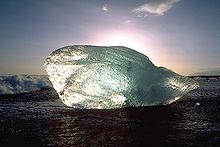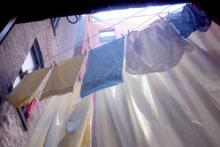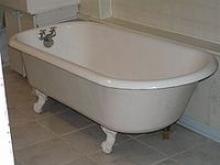10 Alternative Ways to Cool Off, Part II
5. Use an Evaporative Cooler
These machines cost less and use less energy than traditional air conditioning units. They work by evaporating hot air and transferring it outside your home. These machines don’t work so well in the humid area where I live, but people who live in drier climates might find that they do just the trick.
4. Use a Single Unit
Single unit air conditioning uses a lot less energy than ones used for whole homes. Just use one for the room you’re in the most. My parents used to do this when we were kids, and they would put up sheets to block off the rest of the house during the summertime to keep the main rooms nice and cool. You could also use erika’s suggestion and try turning your thermostat up just five degrees for a major energy saving impact.
3. Bum Off Someone Else’s Air Conditioning
Here’s the thing—the restaurant, mall, movie theater, or wherever you might go is going to have their air conditioning on whether you want them to or not—and whether you visit or not—so why not just use theirs? It’s like car pooling, only with energy! Take your children to a bounce zone or other indoor play place when it’s too hot to play outside. See if there are any free movies playing (all of our local theaters have some on select days of the week during the summer months). If nothing else, people watch at the mall. You don’t have to spend anything; just window shop, check out the stores, or practice going up and down the stairs (the mall is where we took our daughter to practice using her orthotic inserts, since they have a ton of stairs in nice, manageable segments). You could even eat lunch if you want to—though you don’t have to. Just enjoy the cool air.
2. Keep Ice Water and Ice Cubes Handy
Another thing we often take for granted is our access to water—not only clean water, but cold water! We can keep ourselves cool by continuously drinking cold iced water without using any energy other than our own bodies. (As a bonus, our bodies also burn a few calories while it warms the cold water—though not many.) Some say that keeping your pulse points, such as your wrists, cool with ice cubes or cool washcloths can also help eliminate the need for artificial cooling.
1. Take a Siesta
I like this option! By taking a nap, we can cool off a bit and get some much needed rest—in our house where the adults work nights, rest can be hard to come by. We really love our family naps around here, and the fan alone is good enough during these precious few hours.






